
It’s obvious that customers tend to buy a product or service they recognize and trust.
So, ask yourself: Is your brand the first that comes to mind with consumers?
By measuring brand equity, your organization can rely on data-driven insights to improve awareness, perception, and usage.
And with, 77% of B2C consumers making purchasing decisions based solely on the brand name, you can’t afford not to.
In this blog, we’ll discuss the importance of measuring brand equity, key metrics to focus on, share an example case study, and more.
What Is Brand Equity?
Brand equity refers to the value that a brand holds in the market, the perception of a brand’s reputation, and the emotional connection that consumers have with it.
It is the intangible asset that represents the power of a brand to influence customer behavior and purchase decisions.
For instance, 81% of consumers need to trust a brand to consider buying from it. Meaning trust, perception, and awareness go a long with in growing strong brand equity.
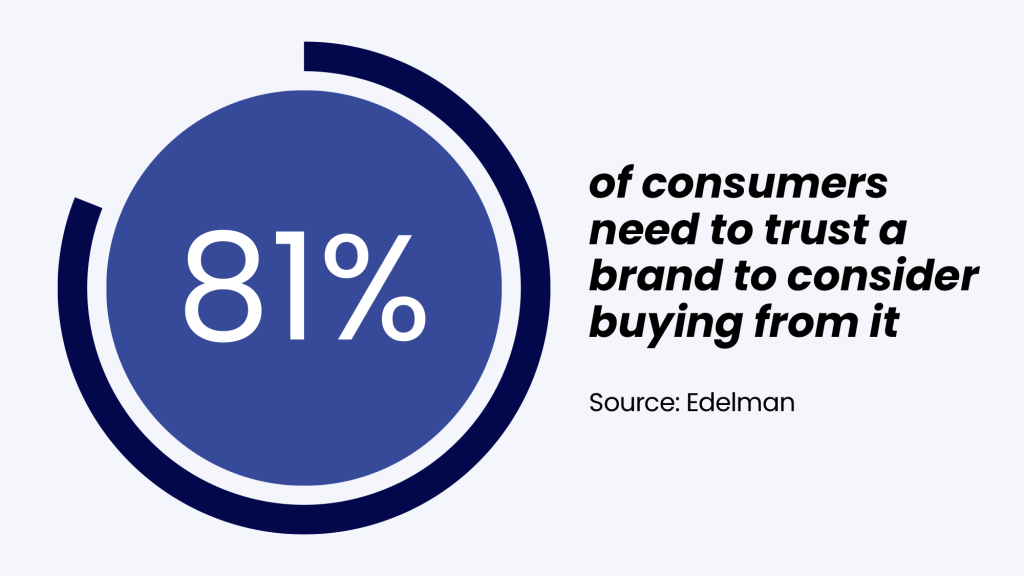
The Importance of Measuring Brand Equity
Measuring brand equity is essential for any business.
It provides valuable insights into how your target consumers perceive your brand and helps you understand how to improve the brand image, ultimately leading to increased revenue and market share.
The benefits of measuring brand equity include:
1. Determines your brand’s strength
Measuring brand equity helps you determine your brand’s strength compared to your competitors.
This is important because you are more likely to attract and retain customers with positive brand equity, ultimately generating more revenue.
For instance, consumers are more than twice as likely to buy first, stay loyal, and advocate for brands they trust.
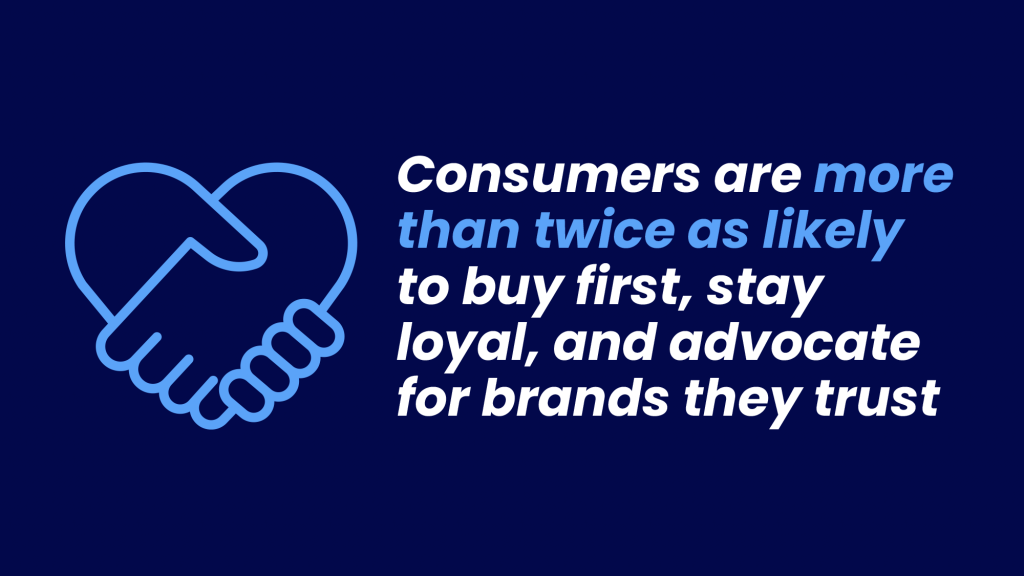
By analyzing the perception of your brand in the market, you can identify areas where you need to improve and implement strategies to enhance your brand image.
For example, suppose you discover that your target audience doesn’t perceive your brand positively. In that case, you can use surveys to identify the top factors influencing negative customer sentiment.
With this insight, you can determine high-priority areas such as improving your product and service quality to improve brand perception.
Recommended Reading: Brand Perception Surveys [Definition, Process, Example Questions]
2. Focuses on consumer behavior
Measuring brand equity will help you understand the behavior of your target audience.
You can identify which factors drive customer loyalty and brand preference by understanding why customers buy.
This information can further help tailor your marketing strategies to your target audience’s needs and preferences.
Let’s say your brand’s target audience prefers eco-friendly products, you can focus on developing and marketing environmentally-friendly products.
It is also an opportunity to segment your customers and group them based on common interests and habits to deliver unique marketing messages.
For example, our market research company recently conducted a customer segmentation survey with grocery shoppers.
Here is an example of a customer segment created with an online survey.
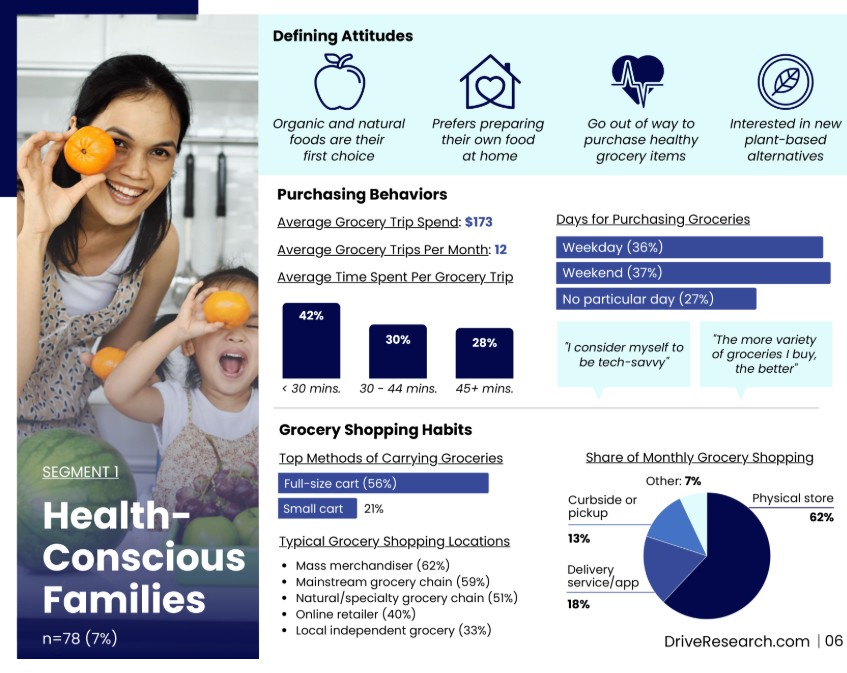
Download the Grocery Segmentation Report for more insights
3. Assists in data-driven decision-making
Measuring brand equity will help you make informed decisions about product pricing, design, marketing campaigns, and more.
As we discussed earlier, customers are willing to pay a premium price for your products if they perceive your brand as high quality, allowing you to price them higher.
On the other hand, if your company’s brand is perceived as low quality, you may need to work towards raising your brand equity to remain competitive in the market.
4. Increases brand loyalty
Lastly, measuring brand equity allows you to identify areas where you can strengthen your brand image and improve customer loyalty.
A stronger brand connection can lead to increased customer loyalty, which can, in turn, increase revenue and market share.
Brand Equity Metrics to Measure
Important metrics for measuring brand equity include brand awareness, relevance, competitive metrics, and the total value of the brand.
You can measure these metrics through brand equity surveys, website analytics, and market research.
All play a vital role in understanding how well your brand is performing compared to competitors and whether you meet the needs of your target consumers.
Let’s dive more into what brand equity metrics are important to measure and grow
1. Brand awareness
Brand awareness refers to how familiar consumers are with your brand. You can measure it by conducting brand awareness surveys, website analytics, and social media metrics.
A high level of awareness indicates that your brand is well-known and recognized by consumers, which can lead to increased sales and market share.
For context, 46% of customers are more likely to buy from brands they are familiar with.
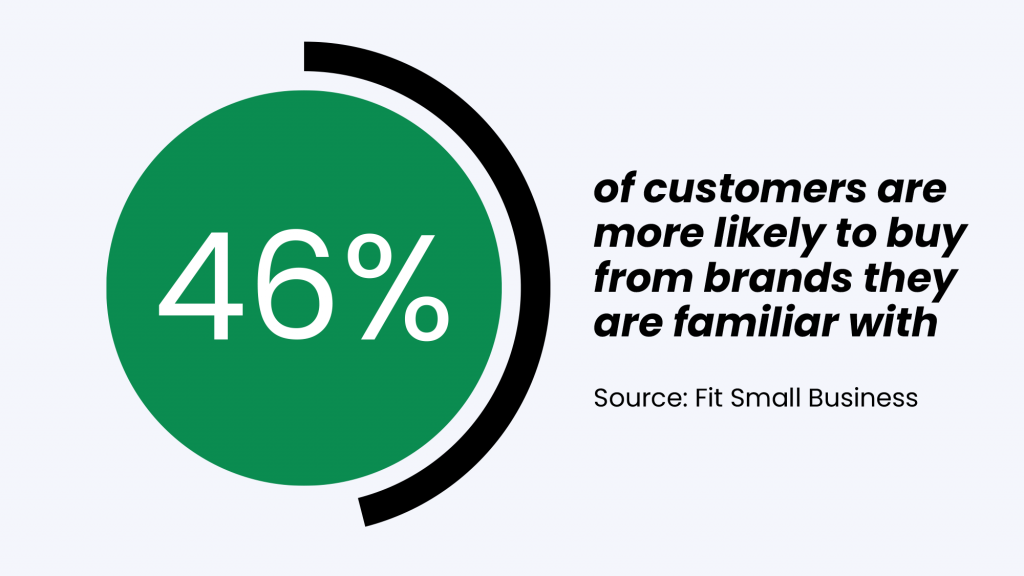
2. Brand relevance
This brand equity metric measures how well your brand meets the needs and expectations of your target audience.
You can measure brand relevance using surveys and online focus groups that ask consumers about their perception of your brand and how well you meet their needs.
3. Competitive metrics
This metric is straightforward. It compares your brand’s performance against your competitors.
You can measure it by conducting competitor analysis.
Or, doing secondary research into their marketing messaging, pricing, customer reviews, and more.
Specifically, you can measure how your brand measures against your competitors regarding market share, customer satisfaction, and brand awareness.
A high level of competitive performance indicates that your brand is outperforming its competitors, which can lead to increased market share and revenue.
4. Total value of the brand
This metric takes into account both the financial and non-financial value of a brand.
According to Neil Patel, below are the most critical financial factors to consider when measuring brand equity:
- Market share: The percentage of overall sales in your industry that your market takes in
- Transaction value: The price you offer your product or service for
- Price premium: Your company’s ability to offer your product or service for a higher-than-average price to increase its appeal
- Revenue generation and potential: The revenue generated through selling of products and services and the potential revenue should the trend continue
- Growth rate and sustainability: Your company’s ability to scale as revenue increases
The non-financial factors include customer loyalty and brand reputation.
Customer loyalty measures how likely customers are to continue using your brand’s products or services. You can measure customer loyalty through the Net Promoter Score – a metric that indicates how likely a customer will recommend your brand to others.
A high level of customer loyalty indicates that a brand is meeting customers’ needs and expectations, which can lead to increased sales and revenue.
Here’s our complete guide on NPS to help you explore this further.
Whereas brand reputation is measured using surveys that ask consumers about their perception of your brand’s quality, reliability, and overall image.
A high level of brand perception indicates that consumers see your products as high quality and reliable, which makes them more willing to pay higher.
How to Measure Brand Equity
Brand equity surveys are a staple in market research.
These studies provide really important metrics to help guide strategies for growth, operations, marketing teams, customer experience teams, and more.
The process of measuring brand equity with surveys is similar to most quantitative market research projects.
While we outline the steps in detail below, here is a quick snapshot of the phases you can expect when working with a full-service online survey company.
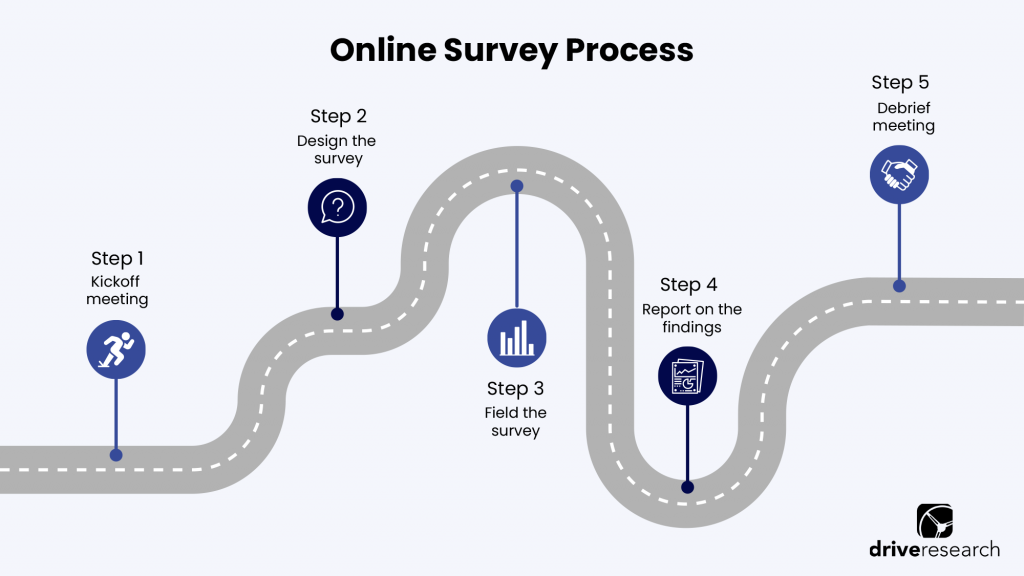
1. Meet your project team
The value of hiring a market research company to help measure brand equity is access to a dedicated project team who has experience executing these studies on a regular basis.
They are responsible for survey design, programming, fielding, and reporting – many of the steps we’ll cover below.
In the first stage of the project, you will meet the market research team and discuss your key objectives for the brand equity study.
It is a critical step as it sets the foundation for expectations and responsibilities.
2. Write the brand equity survey
Based on the conversations discussed in the kickoff meeting, the market research team will start to draft the survey questions.
When measuring brand equity, it’s important to focus on how consumers think, feel, or describe your brand, product, or service.
There are several different types of survey questions that can address consumer sentiment in addition to other areas you’d like to address.
Common brand equity research topics include:
- Awareness
- Perception
- Word association
- Product or service usage
- Comparison to competitors
After the brand equity survey draft is approved by both you and the market research partner, it is ready to be programmed into an online survey software.
Our market research company conducts survey testing to mitigate the risk of unreliable data.
Check out our online survey testing checklist for what to look for before hitting send.
3. Collect responses
Our online survey company launches surveys in two phases.
- First, we send the survey to a small sample of respondents. Doing so acts as another layer of quality assurance to verify the brand equity survey is working as intended.
- Second, we send the survey to the remaining number of respondents until the goal is reached.
A common question we hear is, “How long does it take to measure brand equity?”
Project timelines will vary, but in most cases, an online survey project takes anywhere from 4 to 6 weeks to complete.
Though, as soon as the survey is launched, you will have access to a live reporting dashboard to see responses in real time.
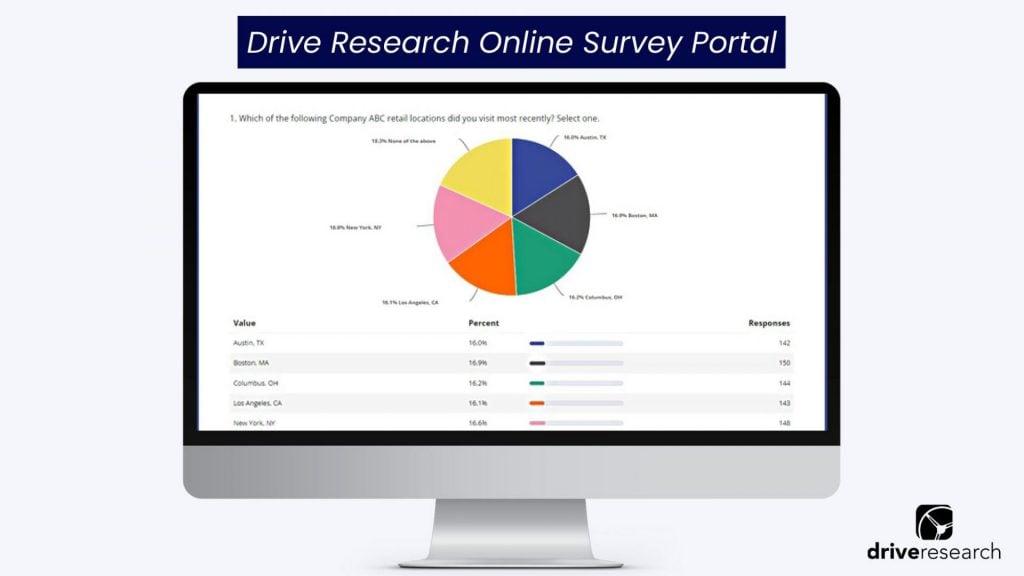
4. Clean the data
During the fieldwork step to measuring brand equity, Drive Research cleans the data for any junk or poor responses that made their way through.
It is important to our team that if you have a goal of 400 responses, each of those is from high-quality respondents. Not 300 good responses and 100 poor responses.
When cleaning survey data, Drive Research looks for quality checks such as:
- Duplicate IP addresses
- Straightlighning
- Time to complete the survey
- Reviewing open-ends for nonsensical responses
5. Analyze, report, and debrief
The last step to measuring brand equity with a third party is reporting on the findings.
Whether you’re interested in receiving a topline summary of key findings or a comprehensive market research report Drive Research can do both.
In addition to a market research report, our team will schedule a debrief meeting to discuss the results of the brand equity research.
Doing so assures the data is comprehensible and can be easily used for data-driven decisions making.
Case Study: Growing Brand Equity for a Bank
Quantitative research methodologies like an online survey are a great tool for measuring brand equity.
Below is a real-world example of how our market research company conducted a brand equity study for a bank.
The objectives
A regional bank hired Drive Research to assist with several projects and programs to collect feedback and data to drive operations, marketing, and strategy.
One of the primary objectives was to measure brand equity through an image and awareness study.
A few of the key topics included:
- Awareness
- Perception
- Word association
- Usage/market share
- NPS
And more
The solution
To best meet the objectives at hand, Drive Research conducted an online survey to measure brand equity.
Brand equity surveys are a great tool to measure and validate key performance indicators like awareness, perception, and usage/market share.
Often times these surveys include a list of top competitors to help understand how the client fits within the marketplace.
Here’s an overview of the brand equity survey specs:
- Up to 35 questions
- Programming, fieldwork, invites, reminders, and survey incentives were included
- A total of n1000 responses were collected from the geography
- A sample size of n1000 offers a +/- 3% margin of error
- Results were analyzed by key segments (age, region, etc.)
- Assumed qualification rate or IR of 80% or higher among consumers
Remember, it’s always best to start more broadly when thinking about your audience rather than going too narrow and potentially missing pieces of the story within the marketplace.
Example brand equity survey questions
Below are a few examples of survey questions that help measure brand equity.
These questions were specifically created for a particular bank, so it’s important to remember surveys can be customized based on the unique goals/objectives of each client.
- Which of the following financial institutions are you aware of? Select all that apply.
- [Show those aware of] Based on your knowledge, what is your perception of the following financial institution(s)? Select from the scale of very negative to very positive.
- Which of the following financial institutions do you use? Select all that apply.
- What bank or credit union is your primary financial institution? Select one.
- Thinking about your primary financial institution, what is the first word or phrase that comes to mind?
- On a scale of 0-10 with 10 being extremely likely, how likely would you be to recommend your primary financial institution to a friend or colleague? Select one.
- Please explain why you rated your primary financial institution as a [insert response] out of 10. Enter your response below.
Looking for more? Here are four brand equity survey questions you need to be asking.
The results
While the results remain completely confidential with the bank, the report included a comprehensive PowerPoint report, an online data portal, a banner file (sent via email), and a raw data file (sent via email).
Key findings for the brand equity survey included:
- Awareness of the client, competitors, and key growth opportunities
- Perception of the client and competitors
- Usage/market share of the client and competitors
- Drivers to primary financial institution choice
- Net promoter score for the client and competitors
- Likelihood of switching primary financial institutions in the next 12 months and identifying which competitors
Remember, each brand equity study can be uniquely customized to meet the unique goals/objectives of your financial institution.
Ultimately, the results and reporting will also be customized to meet the needs of your organization.
Final Thoughts
Whether you’re a business owner or marketing manager, one of your main goals is to establish a competitive advantage by making your brand a thought leader in awareness, preference, and market share.
That’s where measuring brand equity comes into play.
The best way to measure and grow your brand equity is with surveys.
Brand equity surveys provide data-driven insights into how consumers perceive, use, and think about your brand compared to competitors.
Brand equity research will give your team invaluable information to create successful data-driven marketing strategies.
Measure Brand Equity with Drive Research
Measuring brand equity can reveal key data points about why consumers prefer to buy certain products. Through various market research techniques, you can obtain proper information about your brand.
Drive Research is a market research company. Our team builds custom qualitative and quantitative market research for businesses across all industries to help them make informed decisions.
If you’re new to measuring brand equity and would like to get started, contact our team today.



